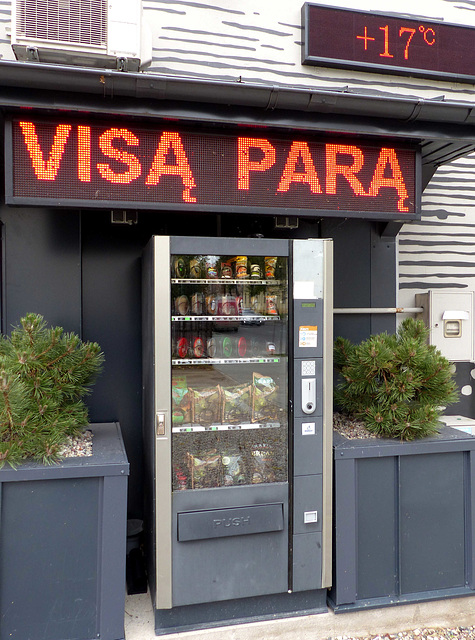Kaunas
Kaunas - Šv. Pranciškaus Ksavero bažnyčia
Kaunas - Perkūno namas
Kaunas - Rotušė
Kaunas - Šv. apaštalų Petro ir Povilo arkikatedra…
Kaunas - Šv. apaštalų Petro ir Povilo arkikatedra…
Kaunas - Šv. apaštalų Petro ir Povilo arkikatedra…
Kaunas - Šv. apaštalų Petro ir Povilo arkikatedra…
Kaunas - Šv. Gertrūdos bažnyčia
Kaunas - Pilis
Kaunas - Laisvės alėja
Kaunas
Suwalki - Konkatedra św. Aleksandra
Suwalki - Konkatedra św. Aleksandra
Białystok
Białystok - Bazylika archikatedralna Wniebowzięcia…
Białystok - Bazylika archikatedralna Wniebowzięcia…
Białystok
Białystok - Bazylika św. Rocha
Białystok - Bazylika św. Rocha
Białystok - Sobór św. Mikołaja
Białystok
Białystok - Pałac Branickich
Kaunas - Fire Station
Kaunas - Šv. arkangelo Mykolo bažnyčia
Kaunas - Šv. arkangelo Mykolo bažnyčia
Kaunas - Kristaus Prisikėlimo bazilika
Trakai - salos pilis
Trakai - salos pilis
Trakai - salos pilis
Trakai - salos pilis
Lake Galvė
Trakai - Švč. Mergelės Marijos Apsilankymo bazilik…
Trakai - salos pilis
Vilnius - Rotušė
Vilnius - Aušros Vartų Dievo Motina
Vilnius - Aušros vartai
Vilnius - Šv. Teresės bažnyčia
Vilnius - Šv. Teresės bažnyčia
Vilnius - Šv. Teresės bažnyčia
Vilnius - Šv. Kotrynos bažnyčia
Vilnius - Dominikonų bažnyčia
Vilnius - Dominikonų bažnyčia
Vilnius - Šv. Kazimiero bažnyčia
Vilnius - Šv. Kazimiero bažnyčia
Location
Lat, Lng:
You can copy the above to your favourite mapping app.
Address: unknown
You can copy the above to your favourite mapping app.
Address: unknown
See also...
Keywords
Authorizations, license
-
Visible by: Everyone -
All rights reserved
-
76 visits
Kaunas - Vending Machine


A settlement existed at the confluence of two large rivers, for many centuries, before Kaunas was first mentioned in written sources in 1361. At that time a brick castle was constructed. Only a year later the castle was captured after a siege and destroyed by the Teutonic Order. It was one of the most important victories of the Teutonic Knights in the 14th in Lithuania. The castle was rebuilt at the beginning of the 15th century.
In 1408 Kaunas was granted city rights by Vytautas the Great. Kaunas began to gain prominence since it was at an intersection of trade routes and a river port. In 1441 Kaunas joined the Hanseatic League. By the 16th century, Kaunas had a public school and a hospital and was one of the best-formed towns in Lithuania.
In 1665, the Russian army attacked the city, and in 1701 the city was occupied by the Swedish Army. Fires destroyed parts of the city in 1731 and 1732. After the final partition of the Polish–Lithuanian state in 1795, the city was taken over by the Russian Empire. During the French invasion of Russia in 1812, Napoleon´s armee passed through twice, devastating the city both times.
When In 1862, a railway connecting the Russian Empire and Imperial Germany was built, Kaunas was a significant railway hub.
As WWII began, about 30,000 Jews were living in Kaunas, comprising about 25% of the city's population. Only very few survived the war.
-
Vending machines are very popular in the Baltic States
Translate into English
In 1408 Kaunas was granted city rights by Vytautas the Great. Kaunas began to gain prominence since it was at an intersection of trade routes and a river port. In 1441 Kaunas joined the Hanseatic League. By the 16th century, Kaunas had a public school and a hospital and was one of the best-formed towns in Lithuania.
In 1665, the Russian army attacked the city, and in 1701 the city was occupied by the Swedish Army. Fires destroyed parts of the city in 1731 and 1732. After the final partition of the Polish–Lithuanian state in 1795, the city was taken over by the Russian Empire. During the French invasion of Russia in 1812, Napoleon´s armee passed through twice, devastating the city both times.
When In 1862, a railway connecting the Russian Empire and Imperial Germany was built, Kaunas was a significant railway hub.
As WWII began, about 30,000 Jews were living in Kaunas, comprising about 25% of the city's population. Only very few survived the war.
-
Vending machines are very popular in the Baltic States
- Keyboard shortcuts:
Jump to top
RSS feed- Latest comments - Subscribe to the comment feeds of this photo
- ipernity © 2007-2025
- Help & Contact
|
Club news
|
About ipernity
|
History |
ipernity Club & Prices |
Guide of good conduct
Donate | Group guidelines | Privacy policy | Terms of use | Statutes | In memoria -
Facebook
Twitter

Sign-in to write a comment.